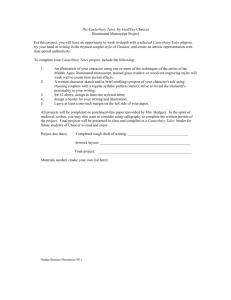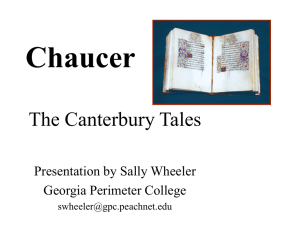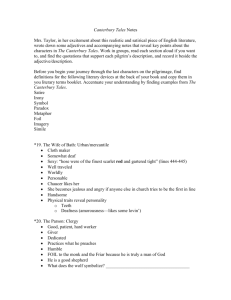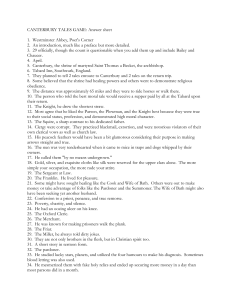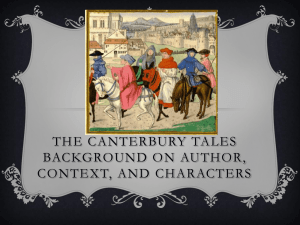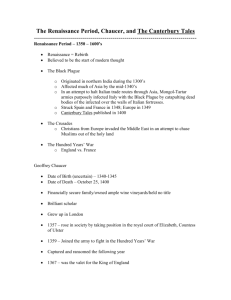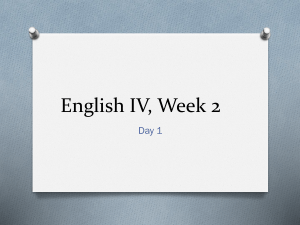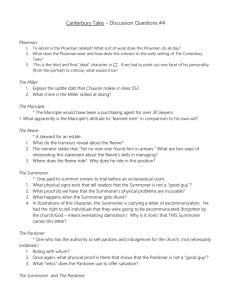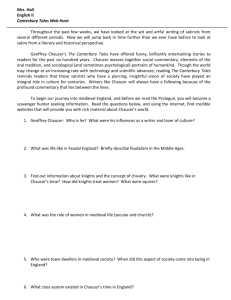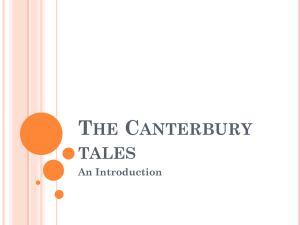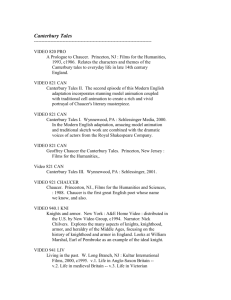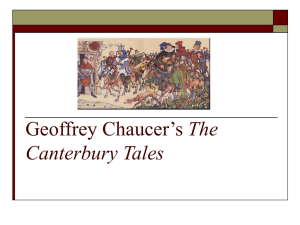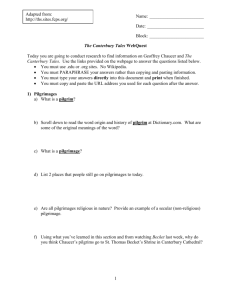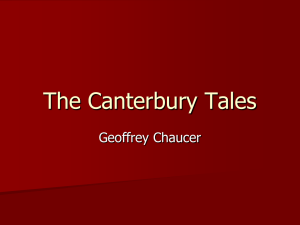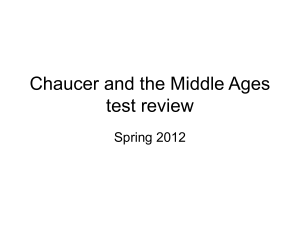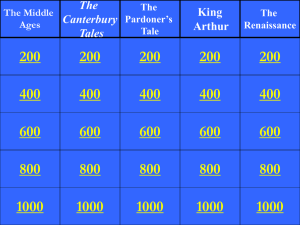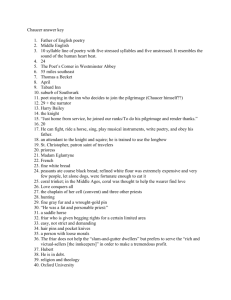GEOFFREY CHAUCER BACKGROUND
advertisement
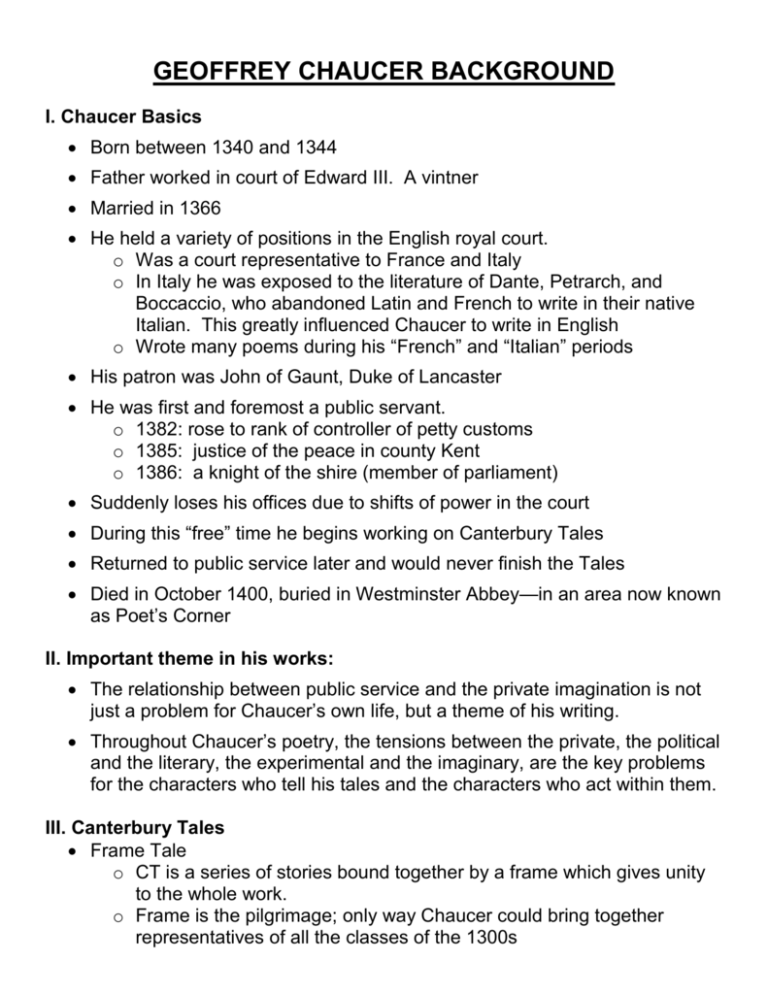
GEOFFREY CHAUCER BACKGROUND I. Chaucer Basics Born between 1340 and 1344 Father worked in court of Edward III. A vintner Married in 1366 He held a variety of positions in the English royal court. o Was a court representative to France and Italy o In Italy he was exposed to the literature of Dante, Petrarch, and Boccaccio, who abandoned Latin and French to write in their native Italian. This greatly influenced Chaucer to write in English o Wrote many poems during his “French” and “Italian” periods His patron was John of Gaunt, Duke of Lancaster He was first and foremost a public servant. o 1382: rose to rank of controller of petty customs o 1385: justice of the peace in county Kent o 1386: a knight of the shire (member of parliament) Suddenly loses his offices due to shifts of power in the court During this “free” time he begins working on Canterbury Tales Returned to public service later and would never finish the Tales Died in October 1400, buried in Westminster Abbey—in an area now known as Poet’s Corner II. Important theme in his works: The relationship between public service and the private imagination is not just a problem for Chaucer’s own life, but a theme of his writing. Throughout Chaucer’s poetry, the tensions between the private, the political and the literary, the experimental and the imaginary, are the key problems for the characters who tell his tales and the characters who act within them. III. Canterbury Tales Frame Tale o CT is a series of stories bound together by a frame which gives unity to the whole work. o Frame is the pilgrimage; only way Chaucer could bring together representatives of all the classes of the 1300s uses realistic language and coarse humor a man of the world who knew how a variety of people spoke and acted IV. Society in The Canterbury Tales Social structure was feudal Power goes from king through nobles through their subjects King and nobles owned land divided into great agricultural estates. Society was hierarchical In middle ages people could conceive of no other system of living. Each level of society had its rights and privileges, and each had duties and obligations Agricultural Feudal System: Knight, Squire, Yeoman, Franklin, Plowman, Miller, Reeve o Yeoman is servant o Franklin owns some land—he would probably be obligated to give some of the profits from his yearly harvest to the king or noble. o Miller does not own land, but mills all the grain on an estate o Reeve manages an estate o Both Reeve and Miller are servants, but an exalted form, and they take advantage of their power Clergy/Religious Life: Nun, Monk, Friar, Cleric, Parson, Summoner, Pardoner, Prioress, Nun’s Priest o 9 of the 30 pilgrims belong to this o Superficial Prioress o Holy Parson o Outright hypocrisy of Summoner and Pardoner Urban Society—Professionals o Not directly commanded by anyone and they would later become the mercantile middle class who would lead the civil war of the 17 th century o Trades of Professions: Merchant, Sergeant at the Law, Five Tradesmen, Cook, Skipper, Doctor, Wife of Bath (clothmaker), Manciple, Host




